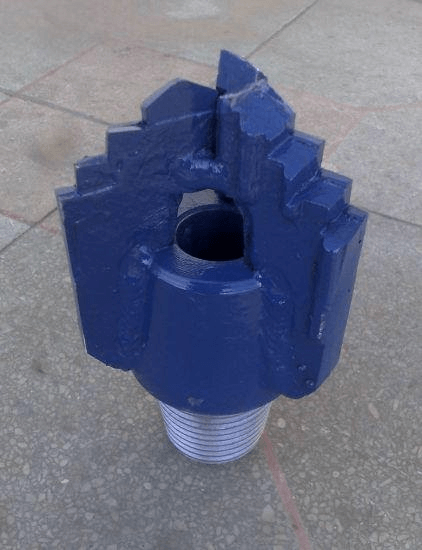The trenchless construction of underground structures and infrastructure is performed in diverse regions in various ground conditions. Generally, soils can be classified as soft, medium, or hard.
Depending on the characteristics of the soil, its classification is dependent on several engineering properties, such as compressive strength, bearing capacity, standard penetration test (SPT) results, and shear strength.
Soft ground conditions usually consist of materials such as clays and soft limestone. Medium ground conditions, on the other hand, may contain hard shale and dolomite-type material. And finally, hard ground generally consists of rock-like material like granite. (Read also: Soil Types and How They Affect Trenchless Construction.)
Although trenchless construction can be performed on several types of ground conditions, selecting the right type of drill bit will help guarantee an efficient and cost-effective drilling process.
What Are the Different Types of Drill Bit Materials?
Drill bits are exposed to extremely harsh conditions. As the drill advances through the soil or rock, it is subjected to several forces, including compression, impact, torque, friction, and heat. As such, drill bits must be constructed from a variety of materials to ensure that they are able to function effectively in the given drilling application.
Steel tooth bits are the most common type of drill bits used in directional drilling applications. Steel is a flexible metal that balances strength, durability, and economy. For more challenging ground conditions, where higher-strength bits are required, tungsten carbide inserts are frequently used.
For extreme conditions, polycrystalline diamond compact (PDC) bits may be employed. Synthetic diamonds are attached to the carbide inserts to give the drill bit strength properties up to 50 times more than that of conventional steel bits. PDC drill bits are used for very challenging ground conditions, like solid rock formations. Hybrids of different drill bit materials are also available and are constructed based on the specific application.
Determining the right type of drill bit typically requires a geological investigation, a comprehensive geological report, and strict adherence to the information provided by geologists and geotechnical engineering professionals. (Read also: Job Role: Geotechnical Engineer.)
Drill Bits for Soft Ground Conditions
Drag bits or fixed cutter bits are ideal for projects with predominantly soft ground conditions. These drill bits are constructed from a single piece of solid steel. While carbide inserts and may be used, they are not a necessity. These drill bits have no rolling parts or associated bearings. As such, the entire cutting assembly rotates with the drill string and cuts through the ground as the blades rotate.
The absence of bearings and rolling components means fewer moving joints, and thus, less possibility of damage to the cutting assembly.
Air or drilling fluids may also be used while drilling with drag bits to suspend and remove the cuttings from the bore to the working surface. In addition to making the drill bit more cost-effective, the monolithic steel construction also minimizes the probability of breakage during drilling.

Figure 1: Three wing drag bit (source)
Drill Bits for Medium and Hard Ground Conditions
To penetrate denser soil, bits must possess adequate strength and durability to successfully break up the material and move it out of the way. A common type of drill bit for directional drilling in medium to hard ground is the three-cone rolling cutter bit.
This type of bit consists of three rotating cones with their points facing inwards towards the center. The cones rotate and grind the soil/rock while the drill string simultaneously rotates the entire bit.
The angle of the rotating cones, its geometry, and the insert materials determine the effectiveness of the cutting head and their suitability for specific ground types.
For example, when the cone angle is high, the penetrating action of the bit on the surface is predominantly a scraping or twisting motion. On the other hand, lower angles deliver a crushing action. The harder the ground, the lower the cone angle should be in order to prevent excessive damage to the bit. Additionally, long and widely spaced teeth are ideal for softer grounds, while tightly-spaced, short teeth are more suitable for harder rock formations. (Read also: Microtunneling in Rocky Conditions and Other Obstructions.)
The choice of insert material depends on the hardness of the ground that needs to be penetrated. Carbide inserts are best suited for medium ground conditions, while polycrystalline diamond bits are mainly used for solid rock.
Similar to drag bits, three-cone rolling cutter bits typically use drilling fluid to suspend and remove the spoils from the borehole.

Figure 2: polycrystalline diamond compact bit (source)

Figure 3: Three-cone rolling cutter bit with Tungsten Carbide Inserts (source)
Measuring Drill Bit Effectiveness
The effectiveness of a drill bit can be determined as its speed of progress through the ground, also known as its rate of penetration. The selection of the best drill bit for a specific application ultimately requires research and an in-depth understanding of the properties of different bit materials. In rare cases, trial and error may be required with various bits to determine the most effective selection.
Another factor that should be considered when judging the performance of a bit is the number of times the bit must be removed from the bore to be checked or replaced. Each time a drill is stopped and removed from service, the project lags behind schedule and costs increase. As such, drill bits with higher resistance to wear may have higher initial costs but lower operational costs and long-term costs.
Bearing wear is a consideration specifically for rolling cutter bits. A selection must be made between sealed or unsealed bearings, and journal or roller bearings. Each decision has an impact on the durability of the bit and, ultimately, its effectiveness in the given application. (Read also:A Complete Guide to the Usage and History of Drill Bits and Tooling.)
Check out how The Crossing Group is leveraging its expertise, experience and core values to deliver a better project: